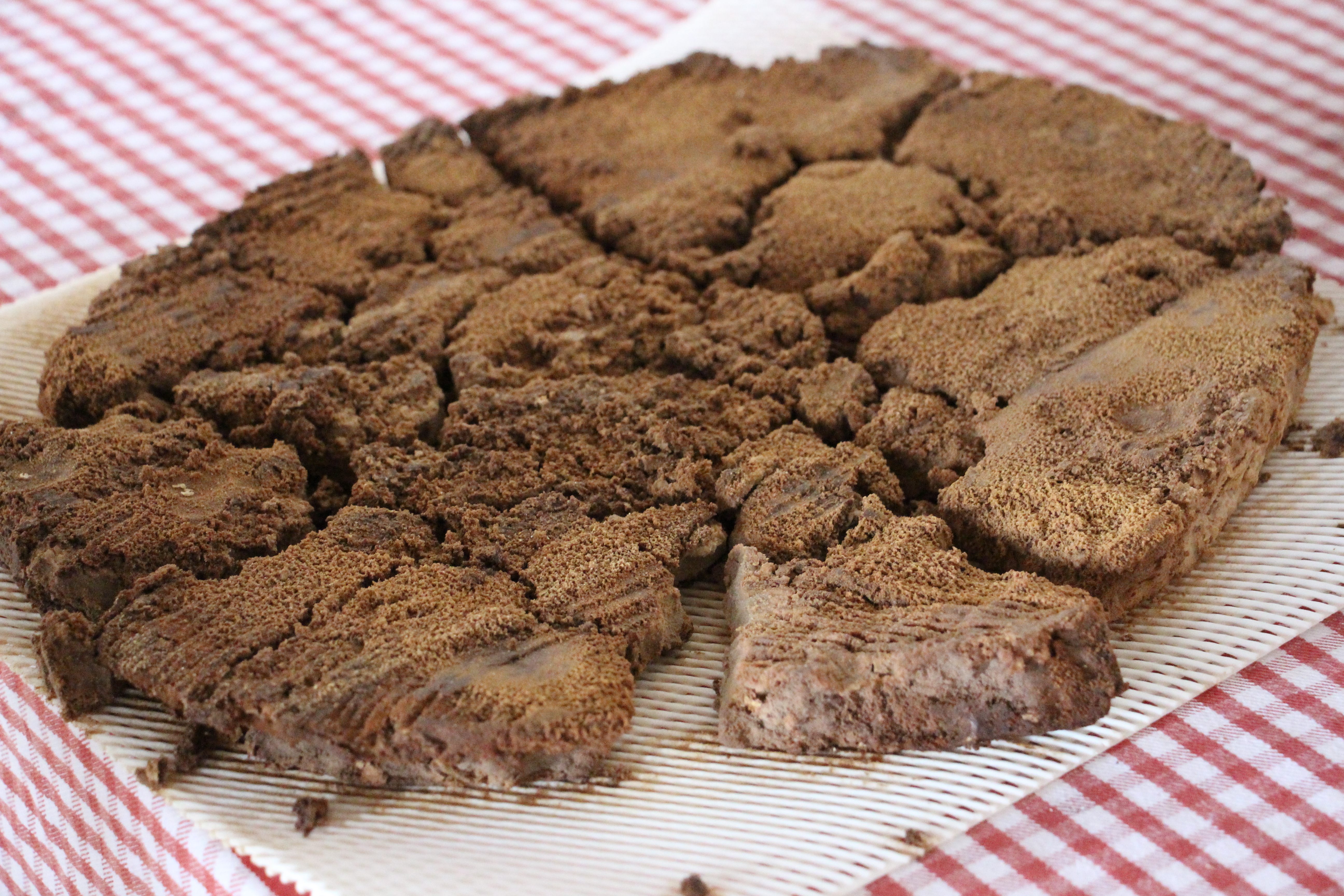Most people — even those who aren’t quite as obsessed with French cheese as I am — have heard of Brie. Also, most people are probably looking at that top picture and wondering why on earth I’ve called it Brie.
Brie — usually — looks more like this. It’s a cow’s milk cheese made in the center of France, not too far from Paris, with a downy white rind and a creamy texture inside. There are actually several kinds of Brie, but two major ones: Brie de Meaux, and Brie de Melun.
I’m not the one who decided that these are the major Bries, mind you: the French government did.
You see, when Charles de Gaulle said that it was impossible to govern a country with 258 types of cheese, he wasn’t referring to all French cheese (the French actually make more than 1,000), but to cheese with a specific label, the Appellation d’Origine Contrôlée, or AOC.
The AOC is the same system that controls wine in France (also lentils, walnuts, and certain kinds of meat, but that’s another conversation for another day). It’s the reason why Vermont-made cheeses have to be called “Brie-style” and also the reason why bubbly from Spain can’t be called Champagne.
Each cheese to have the AOC label is protected by a number of rules. These include what kind of milk is to be used, where the cows are allowed to graze, where the cheese is to be made, and even how heavy the final cheese should be. An AOC Brie de Meaux must weigh between 2.8 and 3.2 kilograms in order to wear the label.
But here’s the thing. Brie starts out much heavier than it finishes, because it is aged for a period of several months before making it to market. What happens to Brie that, at the end of the aging process, weighs too much or too little, or gets a crack or some other kind of blemish on it that means that it can no longer wear the label? Does it get dumped into a dumpster?
(I’d be so much more into dumpster-diving if that were the case.)
But of course, no one’s going to toss perfectly good Brie, even if it doesn’t meet the strict criteria of AOC. But since it can’t be sold at AOC prices, it’s not worth it to ship these cheeses all the way to the local market (which, way back when, was in Meaux, thus the name). Instead, these cheeses get turned into Brie noir.
Brie noir, or black Brie, is Brie cheese that has been aged past that creamy, unctuous texture that you’re used to, to become a cheese with a greyish rind and a texture more akin to Parmesan inside.
This technique was once carried out by locals of the region of Brie, who would wrap imperfect Bries de Meaux in newspaper and let them dry out in the attic. Instead of selling them by weight, as AOC Brie de Meaux was, they were sold by the eighth, and they were only sold locally, never at market, and most certainly not in Paris.
Some locals, including the brother-sister team behind the fromagerie Ganot, age it even further, to where it’s actually almost black inside, with a funky, barnyardy flavor that is best experienced in very thin slivers.
Until recently, you could only ever find Brie noir in the region — it wasn’t a product that Parisians were aware of, much less interested in. But in recent years, I’ve started to see it popping up at some of my favorite fromageries, including La Crèmerie on rue Lancry, not far from the Canal Saint-Martin.
If you get a chance, give this rare cheese a try — it’s not for the faint of heart, but it’s become one of my personal favorites.







